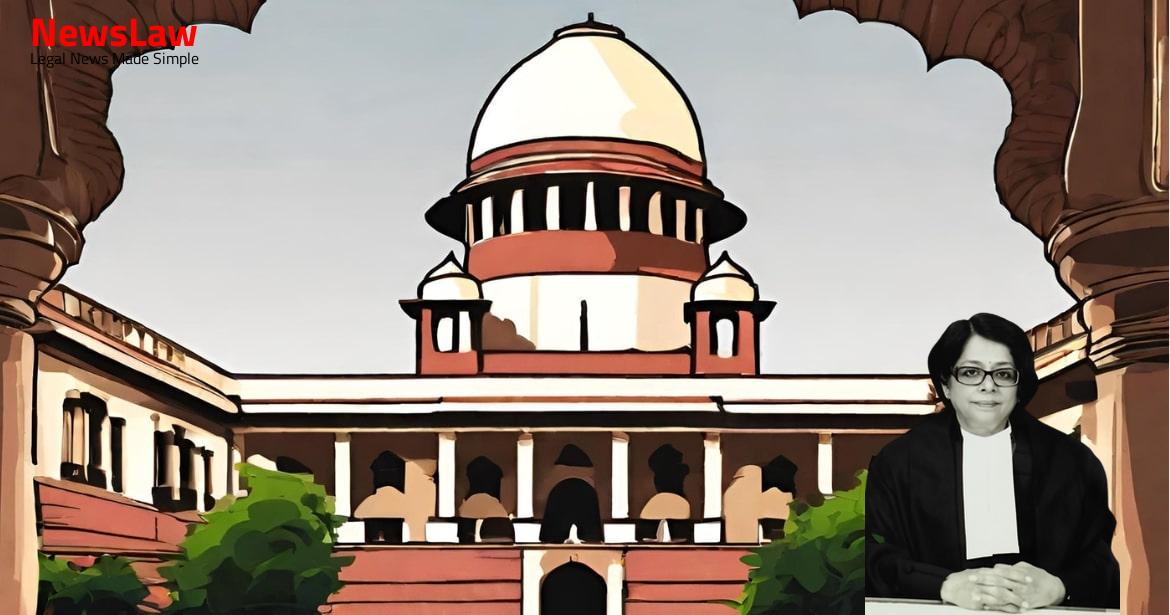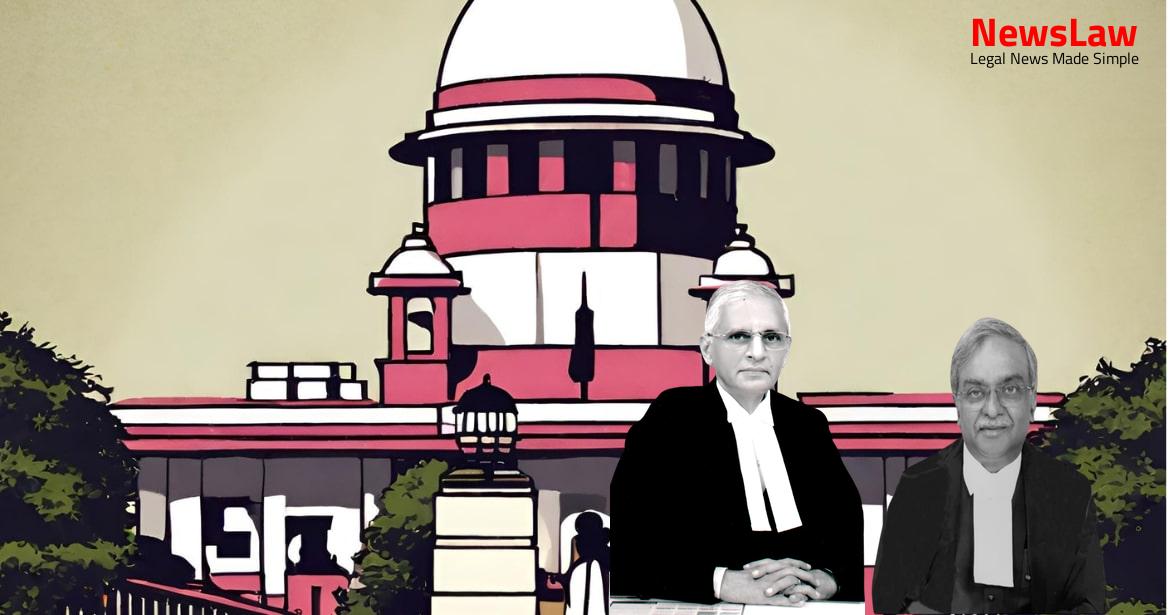In a recent legal case, the court delved into the complex task of determining pecuniary loss in a fatal accident scenario. The analysis by the court highlighted key considerations such as the basis for computation, application of multipliers, and the inclusion of various factors in the compensation award. This summary provides insight into the legal nuances involved in assessing financial impact in such unfortunate events.
Facts
- First appellant is the husband of the deceased.
- Second and third appellants are their minor children.
- Their auto rickshaw was hit by a vehicle, leading to injuries and death.
- Rash and negligent driving of the offending vehicle was proved.
- Judgment by High Court upheld the finding of negligent driving.
- Accident occurred on February 28, 2011, resulting in the death of Bala Babitha.
- Compensation awarded to the appellants by the Tribunal.
- Interest of 7.5% per annum on the compensation amount.
- Both the insurance company and the appellants appealed the compensation amounts.
- Appellants claimed compensation under the Motor Vehicles Act, 1988.
- Deposit of the awarded sum directed within two months.
- The High Court modified and reduced the compensation awarded to the family of the deceased victim to Rs.32,82,090/-, considering her salary from a job she held three years prior as the basis.
- Both the Tribunal and the High Court used the multiplier principle to calculate the pecuniary loss for the family.
- The deceased victim’s income was estimated at Rs.34,385/- per month by the High Court for determining fair compensation.
- The Tribunal quantified the compensation for the deceased victim based on the husband’s income and notional income guidelines set by the legislature.
- Reduction of compensation was a key issue in the arguments presented before the court, focusing on the quantification of pecuniary loss.
- The correct multiplier applied in this case was determined to be 15 due to the age of the deceased victim and the monthly contribution to the family.
- The total pecuniary loss was computed at Rs.30,94,740/- with the application of the multiplier.
- The High Court adjusted the compensation awarded to the family, reducing it to Rs.3,41,000/- for the first appellant.
Also Read: Ensuring Maintenance Rights: Court’s Legal Analysis
Issue
- Issue: Determining the pecuniary loss resulting from the victim’s death
- Question of whether to base the computation on the victim’s previous income or her surviving husband’s income
- Consideration of the appropriate measure for calculating the financial impact of the victim’s demise
Also Read: Analyzing Evidentiary Value in Criminal Conviction Case
Analysis
- The High Court erred in computing the compensation for the loss of love and affection and loss of consortium, which should have been combined.
- The High Court also incorrectly deducted 50% of the determined income as personal expenses, whereas the correct deduction is 1/3 as per the Sarla Verma case.
- Loss of future prospects was not considered by the Tribunal or the High Court in computing the pecuniary loss, which should have been factored in when determining just compensation.
- The Tribunal correctly pegged the notional income of the deceased to her husband’s income, considering the evidence on record.
- The Tribunal and High Courts are directed to provide compensation for loss of consortium as a legitimate Conventional head.
- The compensation for the deceased is calculated based on a notional income of Rs 5000 per month at the time of death.
- A deduction of 1/4th i.e. Rs. 15,000 is made towards personal expenses with a multiplier of 17, resulting in a total assessment of compensation at Rs 7,65,000.
- Future prospects are granted at 40% in addition to loss of consortium and future expenses already awarded.
- Deduction of 1/3 of the deceased’s earning, based on the income of her spouse, is directed for personal expenses as per the Sarla Verma case.
- Addition of loss of future prospects is considered even when the income of the deceased is notional as per the Rajendra Singh case.
- Loss of love and affection is considered part of loss of consortium as per the United India Insurance Company Ltd case.
- Minor children being emotionally dependent on the deceased mother, an addition of 40% to the notional income is recommended for future prospects.
Also Read: Legal Authority and Res Judicata in Representation Matter
Decision
- Monthly income of the deceased was Rs.26,250 with future prospects at 40% of the income (Rs.10,500).
- After deducting 1/3 for personal living expenses, the total entitlement of the appellants under pecuniary loss would be Rs.44,10,000.
- Additional amounts for loss of consortium, funeral expenses, loss of estate, and medical expenses were also awarded.
- The total compensation payable to the appellants was assessed at Rs.46,17,350.
- In the case of the mother of the deceased, a lump sum payment of Rs.2,00,000 was directed instead of Rs.1,00,000 as per the High Court’s decision.
- The bank rate of interest decrease was noted and sustained in the Tribunal and the High Court’s appeal decision.
- The appellants were entitled to receive the total compensation within two months from the date of the judgement.
Case Title: S. CHANDRASEKHARAN Vs. M. DINAKAR (2022 INSC 701)
Case Number: C.A. No.-004688-004689 / 2022



